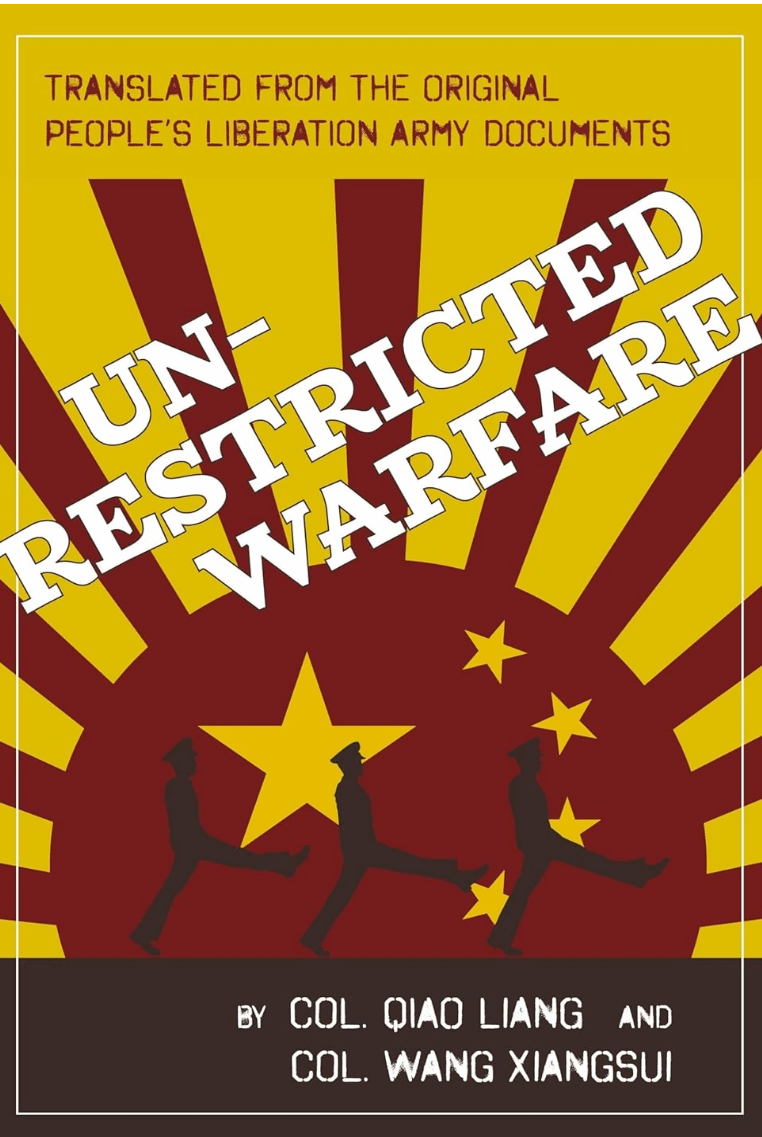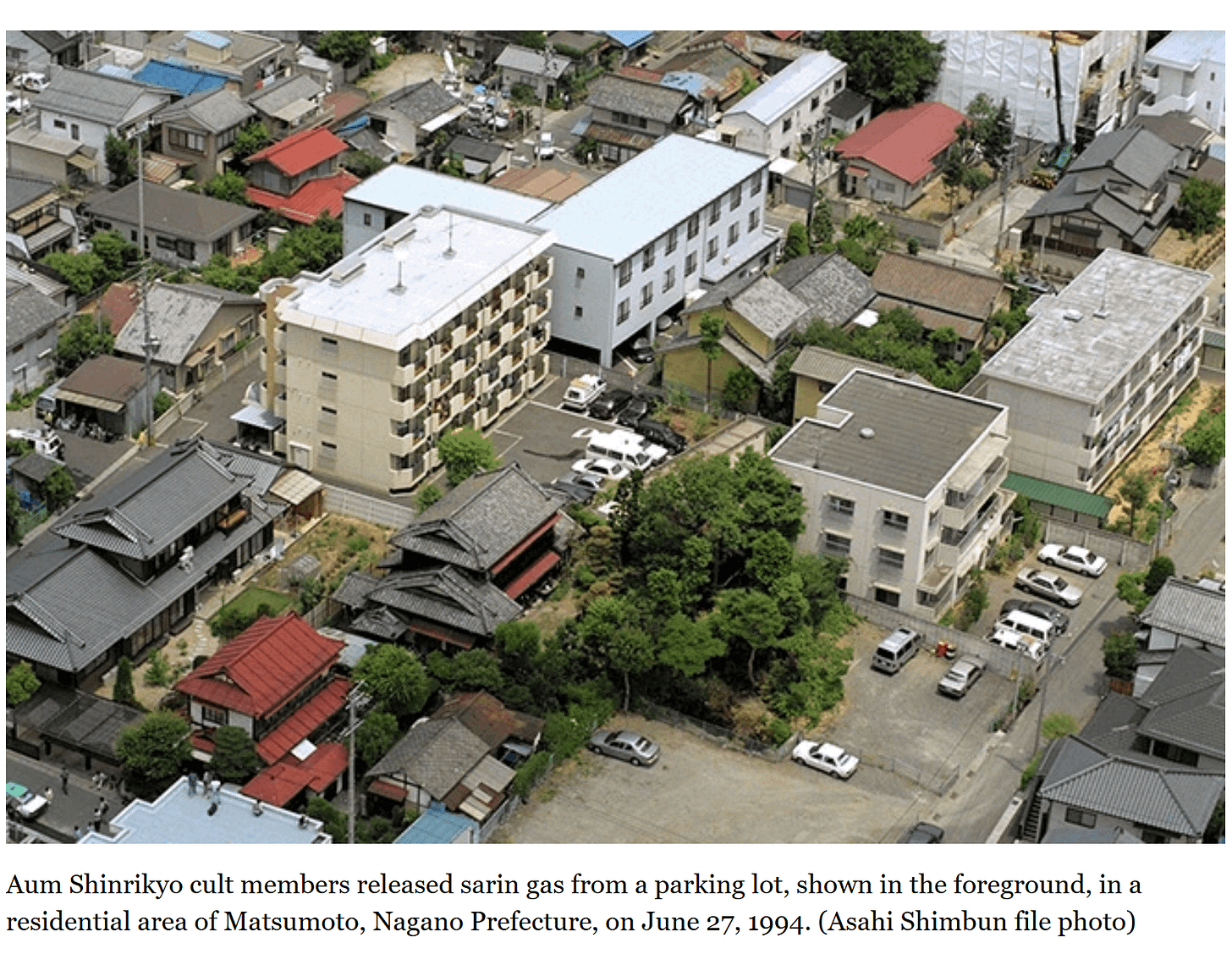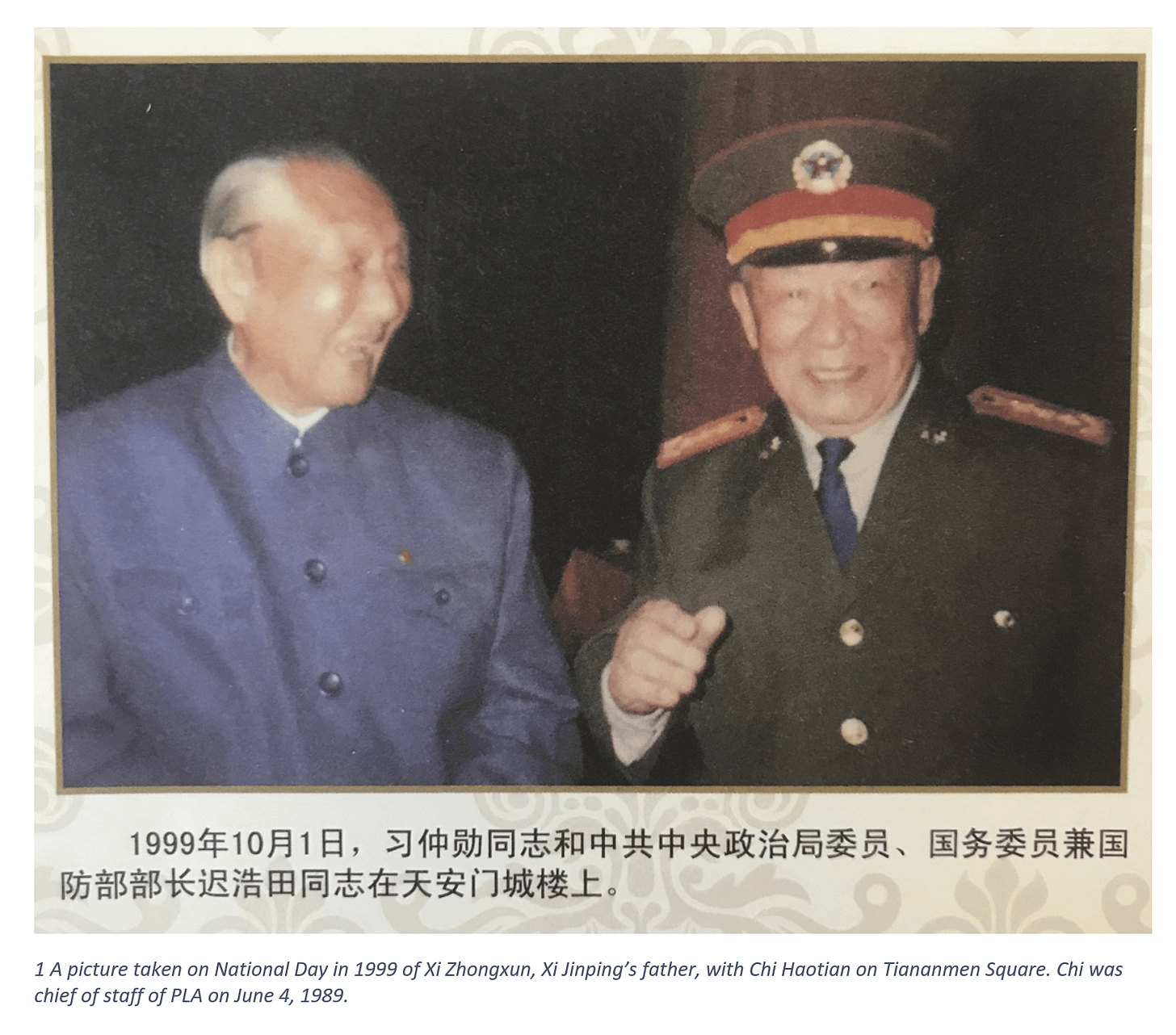How China waged biological warfare against the West, and no-one noticed.
Chapter 1: Unrestricted Warfare
In 1999 two People’s Liberation Army Airforce colonels published a book describing a military strategy they called “Unrestricted Warfare” – or “warfare without bounds”. They recognized at the time that the US had overwhelming military superiority and were unassailable in conventional combat. They were looking for non-conventional methods that might have asymmetric payoffs for the underdog vs the hegemonic power. They saw that non-state actors had already exposed vulnerabilities, shown themselves capable of causing strategic setbacks and significant damage to societies and economies. They accomplished this with limited resources, sometimes even without violence. These non-state actors included “conventional” terrorists like Al-Qaeda, but also hackers, doomsday cults, financial speculators and drug cartels.
“The principal actors starting conflicts are no longer only sovereign states, but Japan's Shinrikyo, the Italian Mafia, Islamist terrorist groups, the Columbian drug cartel, underworld figures, financiers who control large liquid funds, psychologically unbalanced individuals fixated on a goal… can all instigate a military or non-military war. The weapons might be airplanes, cannons, poison gas, bombs, biochemical agents, computer viruses, web browsers, or financial derivatives…these attacks can achieve similar goals to military actions in forcing nations to yield to their interests and demands. They can have more destructive force than military warfare. The threats posed are diverse, and different from the past.”
In Al-Qaeda’s 1998 bombing of US embassies in Kenya and Tanzania the authors were impressed that the US had been dealt a strategic defeat, with tactical means. The safety of Americans was no longer guaranteed in much of the world – and this was accomplished with two truckloads of explosives.
“Bin Laden used a tactical level method - only two truckloads of explosives threatened U.S. national interests on the strategic level, whereas the Americans can only achieve the strategic objective of protecting their own safety by carrying out tactical level retaliation against him.”
At the time of the book’s publication, Al-Qaeda were yet to commit their most infamous atrocity - the attacks of September 11th 2001. These would have a dramatic psychological impact on a different scale, undermining Americans’ sense of security even within the US. Again, this was accomplished without need for sophisticated weaponry – plane tickets and box cutters were sufficient.
Some have suggested Unrestricted Warfare foretells the 9/11 attacks. Osama bin Laden is mentioned frequently, and it refers to the notion that planes may be used as weapons. It doesn’t say how planes might be used as weapons, there is also a conventional hijacking model. But it’s possible it may have provided inspiration to those fanatical enough to sacrifice their own lives. Though the authors frequently describe the subjects of their study as “lunatics” or “fanatics” – it is with a certain admiration for their nefarious achievements and innovations.
They admire bin Laden’s evasion of accountability and the ease with which al-Qaeda was able to operate and finance itself through drug trafficking, arms dealing, forgery, counterfeiting, and donations from Islamists. These activities were coordinated through a network of semi-legitimate shelf-companies which operated unimpeded for many years. The Bin Laden family construction company was even contracted by the US Army to build its barracks in Saudi Arabia. In free market economies the unconstrained pursuit of private profits and individual wealth creates opportunities to undermine society - through elite capture, institutional corruption, opportunistic acquisition of technology, enterprises, land and resources.
“Prior to the major bombings at the American embassies in Nairobi and Dares Salaam which shocked the world, Osama bin Laden was not on the list of known terrorist organizations. Though he had many previous murders attributed to him, he was a "nameless hero" in the Islamic world and never boasted of them. Even after the Americans launched cruise missiles at him and issued an arrest warrant, he repeatedly denied that he was personally involved. "Concealing oneself and shielding" while complaining of an undeserved reputation are characteristic of the new bin Laden type terrorist organizations. Having learned to exploit loopholes in free market economies, they set up legitimate-looking shelf companies and banks, while engaging in large-scale drug trafficking, arms reselling, forgery and counterfeiting to supplement donations from their religious followers.”
The authors consider a wide variety of unconventional “attacks” that might be used against the west: computer hacking, smuggling and counterfeiting, espionage and IP theft, market manipulation, “lawfare”, drug trafficking, the manipulation of public opinion. Today China engages in all these activities, though they are rarely recognized as “warfare”. To an extent they have become normalized – often ignored by the media, and rarely prosecuted by overwhelmed security services. Some even see these as a legitimate form of competition for the underdog seeking to accelerate its own economic development.
“Means and methods include psychological warfare (spreading rumors to intimidate the enemy and break down his will); smuggling warfare (throwing markets into confusion and attacking economic order); media warfare (manipulating what people see and hear to lead public opinion); drug warfare (obtaining illicit profits while spreading disaster in other countries); network warfare (venturing out in secret, concealing one's identity before launching attacks); technological warfare (creating monopolies by setting standards independently); fabrication warfare (presenting a false appearance of strength); resources warfare (seizing wealth by plundering resource deposits); economic aid warfare (bestowing favors, while contriving to assert control); cultural warfare (leading cultural trends to assimilate those with different views); and international law warfare (seizing the earliest opportunity to set regulations)”
Another terrorist group acknowledged by the authors of “Unrestricted Warfare” are the Japanese doomsday cult Aum Shinrikyo, who the authors appreciate for the innovative methods and weapons used in their attacks.
“If terrorists confined their operations simply to traditional approach of bombings, kidnappings, assassinations, and hijackings, this would represent less than the maximum degree of terror. What really strikes terror into people's hearts is the melding of terrorists with new technologies that may evolve into superweapons. We already have a hint of what the future may hold. When Aum Shinrikyo discharged Sarin gas in a Tokyo subway, the casualties from the poison accounted for just a small portion of the terror. This event put people on notice that modern biochemical technology had forged a lethal weapon for terrorists whose ambition was the mass destruction of humanity.”
In the early 1990’s Aum Shinrikyo made several unsuccessful attempts at bioterrorism. In 1990 they tried to release botulinum toxin sprayed from a car driving around the government district in Tokyo. In 1993 they made a similar attempt at the time of the wedding of the crown prince, but again there were no casualties. A few months later they released anthrax spores from their Tokyo office, but used a mild vaccine strain. Nearby residents reported a foul odor, and some brown steam emitted from the building, but no fatalities occurred, and the incident wasn’t thoroughly investigated. They cultured and experimented with a variety of biological agents. A group of cult members, which included doctors, travelled to Central Africa, hoping to obtain samples of Ebola.
Aum Shinrikyo’s first fatal attack occurred in 1994. A converted refrigerator truck was parked in a stand of trees contained an improvised aerosolizing device consisting of a heater, pump and fan controlled by computer. By night, a cloud of sarin, an organic nerve agent was released, wafting on a gentle breeze towards a cluster of residential buildings. The inhabitants included three judges sitting on a case in which the cult was the defendant. The gas entered through open windows and air-conditioning inlets. Before long eight people were dead, with hundreds more needing hospitalization. This attack may have provided the inspiration for an unrecognized bioterrorist attack on Hong Kong during the SARS epidemic (subject of a future post).
The ultimate strategic objective of the CCP was perhaps articulated in a speech given by a party and military elder Chi Haotian to senior party cadres prior to his retirement in 2003. Chi was PLA chief of staff at the time of the Tiananmen massacre, a 3-star General and former Defense Minister. Chi says that the statement “development is our top priority” doesn’t only mean domestic economic development, it implies territorial expansion.
“…many comrades tend to understand ‘development’ in its narrow sense, assuming it to be limited to domestic development. The fact is, ‘development’ refers to the great revitalization of the Chinese nation, which, of course, is not limited to the land we have now but also includes the whole world.”
This isn’t mere symbolism. Chi was forthrightly discussing the colonization of the US as a Lebensraum for people of Chinese ethnicity. And how to accomplish this, in the face of US military dominance?
Biological weapons.
“Conventional weapons such as fighters, cannons, missiles and battleships won’t do; neither will highly destructive weapons such as nuclear weapons. We are not as foolish as to want to perish together with America by using nuclear weapons…only by using non-destructive weapons that can kill many people will we be able to reserve America for ourselves. There has been rapid development of modern biological technology, and new bioweapons have been invented one after another… we have not been idle, in the past years we have seized the opportunity to master weapons of this kind. We can achieve our purpose of “cleaning up” America in an instant…Biological weapons are unprecedented in their ruthlessness, but if Americans do not die then Chinese have to die. If the Chinese people are confined to our present land, a total societal collapse is bound to take place…our land has reached the limit of its capacity…If our biological weapons succeed in a surprise attack, our people will be able to minimize losses in a fight against the United States.”
Of course some will likely dismiss this as paranoid delusion, even though events we witness match what is written and spoken by senior CCP leaders behind closed doors.
While China projects an image of a rapidly developing and technologically advancing society, there is a darkness at its heart. The political system hasn’t developed as the economy has, perhaps even the opposite. Its leadership are fearful of, and fiercely resistant to change. In the face of people’s rising incomes, aspirations, and awareness of the outside world, the regime becomes ever more paranoid and domineering, tightening its surveillance and control over every aspect of their everyday lives. No-one is free, even senior CCP officials and military officers live in fear of a purge, or “corruption inquiry”.
Our inability to attribute or even debate the possibility of biological attacks is a serious vulnerability.



